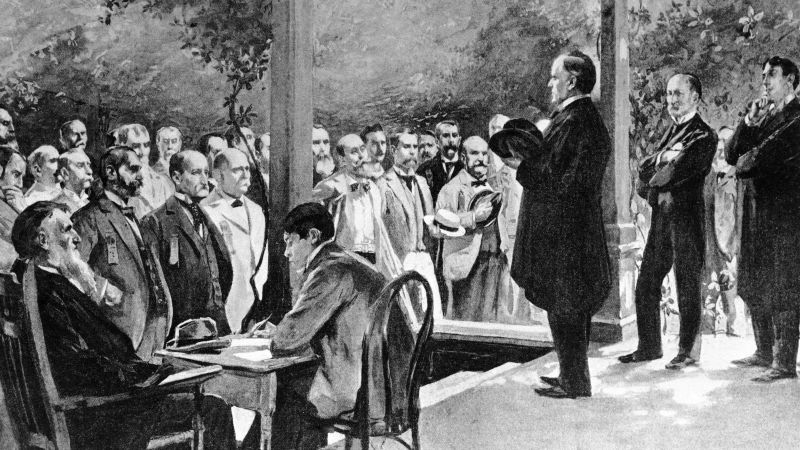In recent events, former President Donald Trump is facing a trial for falsifying business records, which has led to him missing out on campaigning opportunities. He has expressed frustration at not being able to connect with voters directly and has suggested that the trial is part of a larger conspiracy to keep him off the campaign trail. In contrast, President Joe Biden has been actively engaging in campaigning by visiting key battleground states such as Pennsylvania, Michigan, Wisconsin, and Florida. Both candidates understand the importance of connecting with voters through direct engagement on the campaign trail.
Early American presidents did not partake in personal campaigning as they considered it beneath the office they held. However, they found other ways to communicate with voters, such as through their supporters who spread the word on their behalf. Newspapers played a significant role in shaping public opinion in the early republic by openly praising or criticizing candidates. Over time, candidates began adopting different campaign strategies, such as front porch campaigns and active campaigning in various states, which eventually led to the rise of the current model of campaigning seen today.
Key moments in the evolution of campaigning include President Andrew Johnson breaking from tradition to actively campaign in the midterm elections in 1866. Democratic nominee William Jennings Bryan conducted an active campaign in 1896, while Republican William McKinley opted for a front porch campaign. Franklin Roosevelt became the first presidential candidate to accept his nomination in person at a convention in 1932. Harry Truman followed suit in 1948 with an actively campaigned across the country using his whistle-stop campaign approach.
When asked about the best natural campaigners who ran for president, John F. Kennedy and Ronald Reagan were highlighted for their effective campaign strategies. Kennedy actively campaigned in the primary elections in 1960 to demonstrate electability, while Reagan used his acting background and humor to connect with audiences. Active campaigning by presidential candidates helps drive news coverage and amplifies their messages. Despite the challenges of reaching a large and diverse population, candidates continue to campaign to engage with voters and garner media attention.
The permanent campaign has become a prevalent issue in modern politics, with presidents focusing on campaigning for themselves and their party members throughout their term in office. This trend has led to an early start to reelection campaigning and a blurring of lines between governing and campaigning. While there are no immediate solutions to curbing the perpetual campaign cycle, technological advancements have allowed for more direct and targeted outreach to voters. Campaign methods are expected to continue evolving, with a greater focus on micro-targeting and personalized messaging to reach potential voters effectively.


